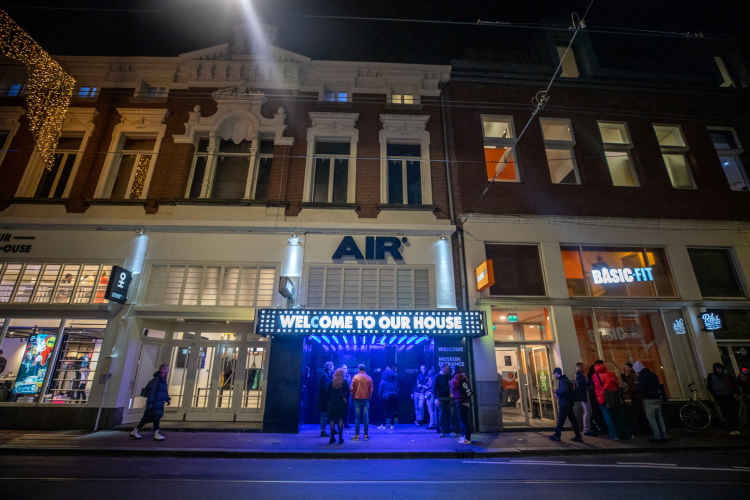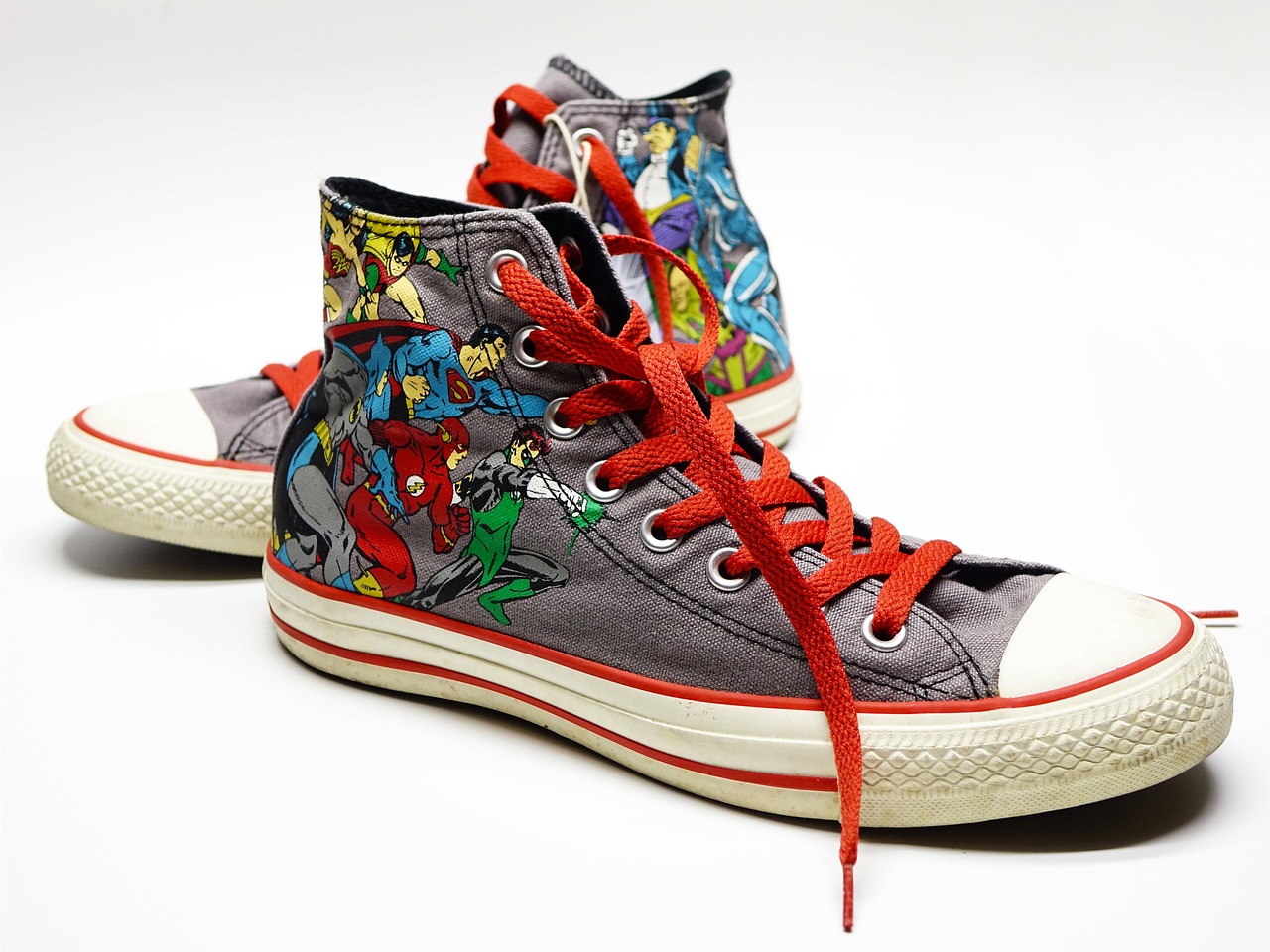Table of Contents
Perfume is not just a fragrance; it’s a work of art, a masterpiece that engages multiple senses. The allure of a fragrance often begins with its packaging, the first tactile and visual encounter a consumer has with the product. Perfume packaging is a canvas where art and design merge to create an immersive and sensory experience. In this article, we explore the profound influence of art and design in the world of perfume packaging.
Perfume, in its essence, is a multisensory journey that transcends mere olfaction. It’s a sensory symphony that engages not only your sense of smell but also your touch and sight. The packaging of a perfume is the overture to this symphony, setting the stage for the captivating performance of the fragrance within.
Sculpted Elegance: Beyond Aesthetics
When you hold a well-designed perfume bottle, you’re not just holding an aesthetic masterpiece; you’re cradling a work of craftsmanship. Perfume packaging often pushes the boundaries of design, employing intricate detailing, exquisite glasswork and unique shapes. Each element, from the cap to the label, is a testament to the dedication of the artisans who craft these vessels.
A Visual Prelude: The Art of Unveiling
The act of opening a perfume box is akin to the ritual of unwrapping a cherished gift. The anticipation builds as layers of packaging are removed, revealing the carefully designed bottle. The visual aspect of this unveiling is an integral part of the perfume experience. It’s the moment when the fragrance’s story begins to unfold and the connection between scent and memory begins to form.
Bringing Stories to Life: Artistic Collaboration
Artists and designers often collaborate with perfume brands to create packaging that tells a story. These collaborations result in unique and evocative visuals that capture the essence of the fragrance. The bottle becomes a canvas for artistic expression, translating the intangible qualities of scent into a tangible and visually arresting form.
Collector’s Treasures: Limited Editions
Limited edition perfume packaging takes the artistry to new heights. These collector’s items are more than just containers; they are coveted art pieces in their own right. They often feature innovative designs, unconventional materials and intricate detailing. Collectors and enthusiasts are drawn not only to the fragrance but also to the exquisite packaging that accompanies it.
Sustainability and Innovation: An Evolving Canvas
In recent years, the perfume industry has been increasingly conscious of its environmental impact. Sustainability has become a central theme in packaging design, leading to innovations such as eco-friendly materials, refillable bottles and minimalist packaging. These sustainable practices reflect the industry’s commitment to preserving the environment while still delivering a visually stunning and sensorially rich experience.
The Ongoing Dialogue: Art, Design and Fragrance
The connection between art, design and fragrance is an ongoing dialogue that continually enriches the perfume world. The bottle is not merely a vessel; it’s a bridge that connects the visual, tactile and olfactory senses. It’s a testament to the enduring power of art and design to enhance and elevate the everyday, transforming a simple bottle of liquid into a work of art that engages the soul.
In essence, perfume packaging is a visual prelude to the olfactory symphony that follows. It’s a canvas where art and design converge to create an immersive and sensory experience that lingers long after the fragrance has evaporated. So, the next time you encounter a beautifully packaged perfume, take a moment to appreciate the artistry and design that elevate it from a mere product to a multisensory masterpiece.
Explore this link for a more extensive examination of the topic: Coco Chanel | Biography, Fashion, Designs, Perfume, & Facts …
The First Impression: Unwrapping the Sensory Journey
Imagine unwrapping a beautifully packaged perfume. The anticipation builds as you peel away layers of intricate paper, revealing an elegant bottle nestled within. The act of opening a perfume box is akin to unveiling a precious artwork and it sets the stage for the olfactory adventure that awaits.
Imagine unwrapping a beautifully packaged perfume. The anticipation builds as you peel away layers of intricate paper, revealing an elegant bottle nestled within. The act of opening a perfume box is akin to unveiling a precious artwork and it sets the stage for the olfactory adventure that awaits.
As you cradle the bottle in your hand, you can’t help but appreciate the craftsmanship that has gone into its design. The bottle itself is a work of art, with its unique shape, exquisite detailing and the play of light on its surface. It’s not just a vessel for fragrance; it’s a piece of decorative art that adds a touch of beauty to your vanity or dressing table. The choice of materials, from the smooth glass to the ornate cap, reflects the essence of the fragrance within.
The design of the perfume box, too, contributes to the overall experience. Intricate patterns, embossed logos and luxurious textures on the packaging all hint at the story the perfume aims to tell. It’s a sensory prelude, giving you a glimpse of what’s to come when you finally spritz the fragrance onto your skin.
As you lift the bottle’s cap and release that first spray, it’s as if you’re opening a portal to a different world. The initial burst of fragrance, like the first brushstroke on a canvas, sets the tone for the entire composition. You may detect the top notes dancing playfully, teasing your senses with their bright and fleeting aromas. This is just the beginning of your olfactory journey and you’re already immersed in a sensory experience that is both exciting and deeply personal.
With each subsequent inhale, the fragrance evolves on your skin, much like an artist adding layers to a masterpiece. The heart notes emerge, revealing the heart of the fragrance and then the base notes, which linger and anchor the composition. It’s a symphony of scents, each note harmonizing with the others to create a unique and captivating melody that is your perfume.
But it’s not just about the scent itself; it’s about the emotions and memories it evokes. A well-chosen perfume has the power to transport you to different places and times. It can remind you of a sunny day at the beach, a cozy winter evening by the fireplace or a memorable night out with friends. It can be a source of comfort, confidence and inspiration, all bottled up in a beautiful package.
In essence, unwrapping a beautifully packaged perfume is more than a mere act; it’s the beginning of a sensory journey that engages your emotions, memories and imagination. It’s an experience that combines art, craftsmanship and personal expression and it leaves an indelible mark on your senses and your soul. So, the next time you unwrap a perfume, take a moment to savor the anticipation, the beauty of the packaging and the magic of the fragrance within. It’s a journey worth relishing.
Don’t stop here; you can continue your exploration by following this link for more details: sec_E_SB_ELA_G8.pdf

Aesthetic Appeal: The Marriage of Form and Function
Perfume packaging is a marriage of form and function, where aesthetics and functionality must harmonize. Designers carefully consider the visual impact of the box, bottle and label, ensuring they resonate with the fragrance’s essence. The choice of materials, colors and shapes plays a pivotal role in conveying the brand’s identity and the scent’s personality.
Perfume packaging is a testament to the artistry that goes beyond the mere containment of a scented liquid. It is a fusion of creativity and practicality, where every element, from the box to the bottle and label, must come together in perfect harmony to create a multisensory experience for the consumer.
In this delicate dance between form and function, designers become storytellers, crafting narratives that encapsulate the very soul of the fragrance within the confines of the package. The visual impact of the packaging is akin to the cover of a book, inviting individuals to delve into the olfactory journey that awaits them. Just as an artist chooses their palette and canvas, perfume designers carefully select materials, colors and shapes that serve as the canvas for their olfactory masterpiece.
Materials are more than just a vessel; they are a tactile and visual experience in themselves. The choice of glass for a bottle may evoke a sense of timeless elegance, while matte finishes on packaging can suggest sophistication and subtlety. The weight and texture of these materials are carefully considered, enhancing the sensory delight of unboxing a new fragrance.
Colors are the silent messengers of emotion and personality. Deep, mysterious blacks or fiery reds can convey sensuality, while soft pastels may evoke innocence and freshness. The interplay of colors on the packaging often mirrors the complexity and nuances of the scent within, providing subtle hints to the wearer about what awaits their senses.
Shapes are not just functional; they are symbolic. The curves and contours of a bottle can evoke sensuality or grace, while a sharp, minimalist design may signal modernity and innovation. The packaging’s silhouette is like a signature, an immediate recognition of the brand’s identity and values.
Labels are the final brushstroke on this fragrant canvas. They bear the responsibility of communicating essential information, such as the fragrance name and brand logo, but they also offer a space for artistic expression. Typography, imagery and embellishments on the label contribute to the overall aesthetic, providing a visual roadmap to the fragrance’s personality.
Ultimately, perfume packaging is a microcosm of the fragrance itself, encapsulating its essence in a tangible form. It engages multiple senses, from sight and touch to anticipation and emotion, making the unboxing of a new scent a ritualistic experience. In this way, the artistry of perfume packaging transcends mere functionality; it becomes an integral part of the fragrance’s allure, inviting consumers to enter a world of sensory delight and self-expression.
For additional details, consider exploring the related content available here modules. The process modules cover the following topics: managing …

Bottles as Artistic Vessels
The perfume bottle itself is a piece of art. It can take on a myriad of shapes, from sleek and minimalist to ornate and opulent. Artistic bottles often reflect the fragrance’s inspiration. For instance, a perfume inspired by the roaring twenties might feature an art deco design, while a scent inspired by nature may have an organic, leaf-shaped bottle. The glasswork, engraving and detailing on these bottles are painstakingly crafted, transforming them into collectible pieces of art.
Indeed, the perfume bottle transcends its utilitarian purpose and emerges as a masterpiece of art in its own right. It embodies the spirit of the fragrance it cradles and, at times, serves as a visual prelude to the olfactory journey within. These miniature vessels of liquid emotion come in an astonishing array of forms, each a testament to the artistry of glassmakers, designers and perfumers. Here’s a deeper dive into the enchanting world of perfume bottle artistry:
Aesthetic Diversity: The sheer diversity of perfume bottle designs is a testament to the boundless creativity that permeates the fragrance industry. From sleek, minimalist flacons that exude modernity to ornate, jewel-encrusted creations that harken back to bygone eras, there is a bottle to match every fragrance and sensibility.
Reflecting Inspiration: Artistic bottles often serve as visual manifestations of a fragrance’s inspiration. If a perfume draws inspiration from a particular historical period, like the roaring twenties, you might find an art deco-inspired bottle, complete with geometric patterns and gilded accents. Nature-inspired scents frequently feature bottles shaped like leaves, flowers or other organic elements.
Craftsmanship: The creation of these bottles is a labor of love. Glassblowers employ centuries-old techniques to mold, shape and decorate the glass. The detailing is often intricate, involving delicate engraving, hand-painted accents and the application of precious metals and gemstones. This meticulous craftsmanship elevates the bottle to a work of art.
Collector’s Items: Many perfume bottles, especially those from luxury and niche brands, are highly sought-after by collectors. These bottles are not merely vessels to contain fragrance; they are coveted as collectible pieces of art. They often become prized possessions that are passed down through generations, each bottle carrying with it a legacy of beauty and scent.
Limited Editions: Some perfume bottles are released as limited editions, further enhancing their allure. These bottles may feature unique designs, special materials or collaborations with renowned artists and designers. Owning such a bottle is not only a declaration of appreciation for fine fragrance but also an investment in a piece of art.
Sentimental Value: Perfume bottles also hold sentimental value for many. They are often gifted on special occasions and become cherished mementos. The act of choosing a fragrance based on the bottle’s design adds an extra layer of emotion to the gift-giving experience.
Environmental Considerations: In recent years, there has been a growing awareness of the environmental impact of perfume packaging. Brands are increasingly exploring sustainable and refillable bottle designs to reduce waste and minimize their carbon footprint while still preserving the artistry of bottle design.
In sum, the perfume bottle is a canvas where fragrance and art converge. It encapsulates the essence of the scent it holds and offers a glimpse into the world of the perfumer’s imagination. These miniature works of art invite us to appreciate fragrance not only as an invisible adornment but as a tangible and visually captivating experience. Whether displayed on a vanity or tucked away in a fragrance collection, the perfume bottle is a reminder that art can be found in the most unexpected and delightful places.
Explore this link for a more extensive examination of the topic: Glass from Islamic Lands | Essay | The Metropolitan Museum of Art …

Visual Storytelling: Art and Perfume’s Symbiotic Relationship
Art and perfume have a symbiotic relationship that dates back centuries. Famous painters like Salvador Dalí and René Magritte have lent their artistic talents to perfume bottles and advertisements, creating iconic visuals that evoke the essence of the fragrance. These collaborations between art and perfume add an extra layer of narrative depth, inviting consumers to connect with the fragrance on a profound level.
Art and perfume, two seemingly distinct forms of expression, share a profound and enduring connection that transcends time. This timeless relationship between scent and art is like a symphony of the senses, orchestrating a multisensory experience that has been enchanting humanity for centuries.
Throughout history, artists have been drawn to the world of perfumery, recognizing the intrinsic link between visual and olfactory aesthetics. Salvador Dalí, a master of surrealism and René Magritte, known for his thought-provoking symbolism, brought their imaginative prowess to the design of perfume bottles and advertisements. Their contributions elevated these scent vessels to the realm of art, infusing them with symbolism, depth and intrigue.
Imagine the iconic Dalí-designed bottle for the perfume “Daliflor,” where an elegant glass flacon sprouted an otherworldly flower. It wasn’t just a container; it was a surreal objet d’art, mirroring the dreamlike quality of the fragrance itself. Magritte’s work, on the other hand, transformed perfume ads into enigmatic puzzles, much like his paintings. His “Le Bouquet Tout Fait” fragrance campaign challenged viewers to explore the paradoxical relationship between the ordinary and the extraordinary, paralleling the complexities of scent.
These collaborations between art and perfume are more than just aesthetic unions. They infuse perfumes with stories, emotions and universes of imagination. The bottle becomes a portal into a world of dreams and memories, a tangible bridge connecting the intangible realms of scent and vision. When you hold a Dalí or Magritte-inspired fragrance, you’re not just holding a bottle; you’re holding a piece of artistry, a fragment of creativity distilled into liquid form.
Moreover, this fusion of art and perfume invites consumers to engage on a profound level. It encourages us to explore not only the fragrance itself but also the artist’s intention and the narrative they crafted. It’s a journey of discovery, as we decipher the symbols and metaphors hidden within the artwork, resonating with the intricate layers of the scent. In this way, art and perfume become a medium for self-expression, a canvas upon which our own emotions and experiences can be painted.
In the 21st century, this symbiotic relationship between art and perfume continues to evolve. Contemporary artists collaborate with perfumers to create limited-edition scents that are an olfactory extension of their artistic vision. These fragrances embody the zeitgeist of our time, reflecting the complexities and nuances of the modern world.
In essence, art and perfume are kindred spirits, each enhancing the other’s beauty and significance. Together, they create an immersive experience that transcends the boundaries of individual senses, inviting us to explore the boundless realms of human creativity and emotion.
To delve further into this matter, we encourage you to check out the additional resources provided here: Symbionts: Contemporary Artists and the Biosphere

Limited Editions and Collectibles
Perfume brands often release limited edition fragrances with packaging that transcends conventional design. These collector’s items are coveted by enthusiasts and art connoisseurs alike. Whether it’s a bottle adorned with Swarovski crystals or one encased in a sculpture-like holder, limited edition perfume packaging elevates the fragrance to a realm of luxury and exclusivity.
Perfume brands have mastered the art of transforming their products into more than just fragrances; they’ve turned them into coveted works of art. Limited edition fragrances, with their exceptional packaging designs, offer a glimpse into the intersection of luxury, creativity and exclusivity.
In the realm of limited edition perfumes, packaging becomes an essential part of the experience. It’s no longer just a vessel to contain the scent but a canvas upon which the brand can express its artistic vision. These collector’s items are designed to leave a lasting impression, much like the fragrance they hold within.
Take, for example, the bottles adorned with Swarovski crystals. These dazzling gems not only add a touch of opulence but also capture and refract light, creating a mesmerizing dance of colors and sparkles. Opening such a bottle is like unwrapping a treasure, revealing not only a luxurious scent but also a testament to the craftsmanship and attention to detail that goes into creating these limited edition masterpieces.
But it’s not just about the crystals. Limited edition perfume packaging often features intricate, sculptural holders that are nothing short of art installations. These holders are meticulously crafted, sometimes by renowned artists, to reflect the essence of the fragrance or the brand’s values. They become conversation pieces, displayed proudly on vanity tables and in glass cabinets, blurring the line between perfume and objet d’art.
For enthusiasts, collectors and art connoisseurs, these limited edition offerings are irresistible. They become sought-after treasures, often commanding high prices in the resale market. Owning one is not just about possessing a unique fragrance but also a piece of history, a testament to the brand’s commitment to innovation and creativity.
In the world of limited edition perfume packaging, every detail matters. From the choice of materials to the intricate designs, these collectibles elevate the fragrance experience to a level of luxury and exclusivity that transcends the ordinary. They remind us that perfume is not just a scent; it’s an art form, a source of beauty and inspiration that can be held, admired and cherished for years to come.
For a comprehensive look at this subject, we invite you to read more on this dedicated page: The Beauty of Bottles – always inspiring more…

Sustainability and Innovation
In recent years, sustainability has become a key focus in perfume packaging design. Brands are exploring eco-friendly materials, minimalist designs and refillable containers to reduce environmental impact. These innovations reflect a growing awareness of the importance of responsible packaging in the perfume industry.
In recent years, sustainability has transcended being just a trend and has firmly entrenched itself as a cornerstone of modern perfume packaging design. This paradigm shift has been driven by an ever-growing global consciousness regarding environmental issues, as well as consumers’ increasing desire for products that align with their eco-friendly values.
One notable transformation in the perfume packaging landscape is the adoption of innovative and eco-conscious materials. Traditionally, perfume packaging often relied on intricate, ornate and often non-recyclable materials, such as heavy glass bottles and excessive plastic wrapping. However, forward-thinking brands are now turning to sustainable alternatives like recycled glass, biodegradable plastics or even wood and bamboo for caps and containers. These materials not only reduce the carbon footprint but also convey a sense of authenticity and environmental responsibility to consumers.
Minimalist design aesthetics have also gained prominence in sustainable perfume packaging. Brands are recognizing that less can indeed be more when it comes to visual appeal and environmental impact. Streamlined and simplistic designs not only reduce waste during production but also make packaging materials easier to recycle. This shift toward minimalism also extends to labeling and branding, with many brands opting for soy-based inks and recyclable paper for their packaging, creating a more holistic approach to sustainability.
Refillable perfume containers represent a groundbreaking innovation in the fragrance industry. These containers have been designed with the dual purpose of reducing waste and offering consumers a cost-effective, environmentally-friendly and convenient way to replenish their favorite scents. Perfume enthusiasts can now purchase a beautifully crafted initial container and subsequently purchase refill cartridges, significantly cutting down on the need for new packaging materials. This concept not only appeals to eco-conscious consumers but also aligns with the circular economy, fostering a sense of responsibility towards the environment.
Moreover, sustainability has inspired a shift in consumer perceptions. Perfume packaging, once seen as an ephemeral aspect of the product, is now considered an essential part of the fragrance experience. Sustainable packaging sends a powerful message that a brand is committed to environmental stewardship and a healthier planet. As a result, consumers are increasingly inclined to support brands that share their values, leading to a surge in demand for eco-friendly perfumes.
In conclusion, the transformation of perfume packaging design towards sustainability reflects a broader shift in consumer expectations and corporate responsibility. Brands are not only making efforts to reduce their environmental footprint but are also actively engaging with consumers in a meaningful way. This evolution is not merely a fleeting trend but a fundamental and enduring change that is reshaping the perfume industry for a more sustainable future.
Explore this link for a more extensive examination of the topic: The Future Of Fragrance Packaging | Beauty Packaging

The influence of art and design in perfume packaging is a testament to the power of visual storytelling. Perfume packaging is not just a vessel for the fragrance; it’s a gateway to a sensory journey. It is a tangible representation of the brand’s ethos and the fragrance’s soul. From the sculptural elegance of the bottle to the choice of colors and textures, every detail is meticulously crafted to create a lasting impression.
Next time you encounter a beautifully packaged perfume, take a moment to appreciate the artistry and design that went into creating that sensory masterpiece. Perfume packaging is a testament to the enduring bond between art and fragrance, where each bottle becomes a canvas and each scent is a masterpiece waiting to be discovered.
For additional details, consider exploring the related content available here Package design as a branding tool in the cosmetic industry …
More links
If you’d like to dive deeper into this subject, there’s more to discover on this page: Packaging Inspiration from Other Design Mediums – Works Design …
